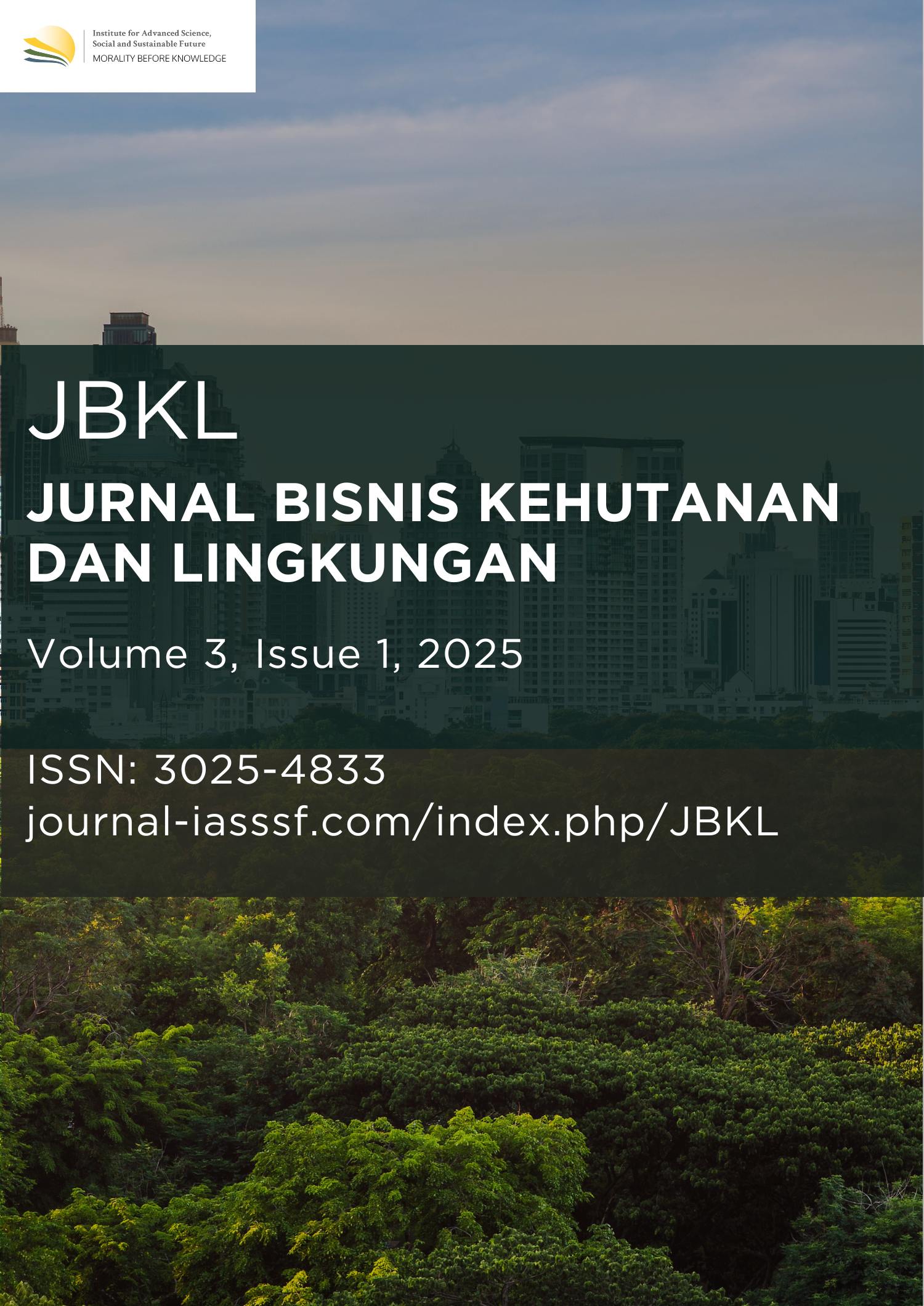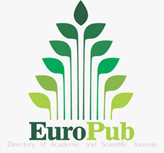Agroforestry development strategy through a food policy perspective for forest function restoration and local food security in Indonesian watersheds
DOI:
https://doi.org/10.61511/jbkl.v3i1.2025.2298Keywords:
agroforestry, food policy, forest function, watershed areaAbstract
Background: Agroforestry, which integrates agricultural and forestry crops on the same land, offers significant potential to enhance food security while restoring forest functions. In Indonesia, many watersheds face degradation due to land conversion and deforestation, leading to reduced food availability and community welfare. Linking agroforestry to food policy is therefore critical to address both ecological and social challenges. Methods: This study employed a literature review with descriptive analysis, examining research and policy documents related to agroforestry, watershed management, and food security. Findings: The results indicate that agroforestry development improves land productivity, supports biodiversity, enhances environmental quality, and strengthens local food security. However, successful implementation requires policies that integrate agroforestry practices with food security programs at the national and regional levels. Conclusion: Agroforestry is an effective strategy for simultaneously restoring forest functions and improving food security in Indonesian watersheds. Policy integration and coordinated programs are necessary to ensure sustainability and maximize impact. Novelty/Originality of this article: This study highlights agroforestry not only as an ecological solution but also as a food policy strategy, emphasizing its dual role in environmental restoration and food system resilience in Indonesia.
References
ADB. (2009). The Economics of Climate Change in Southeast Asia: A Regional Review. Manila.
Arifin, B. (2019). Distribusi Pangan di Indonesia: Hambatan dan Solusi Kebijakan. Jurnal Agribisnis dan Kebijakan Pangan, 9(2), 72-85.
Chandler, F. (2003). 5 key research and development activities of RUPES. RUPES Newsletter, 1(1). World Agroforestry Centre (ICRAF)
Chatterjee, D., Kuotsu, R., Ray, S. K., Patra, M. K., Thirugnanavel, A., Kumar, R., Borah, T. R., Chowdhury, P., Pongen, I., & Satapathy, B. S. (2022). Preventing soil degradation in shifting cultivation using integrated farming system models. Archives of Agronomy and Soil Science, 68(13), 1841– 1857. https://doi.org/10.1080/03650340.2021.1937139
Duffy, C., Toth, G. G., Hagan, R. P., McKeown, P. C., Rahman, S. A., Widyaningsih, Y., ... & Spillane, C. (2021). Agroforestry contributions to smallholder farmer food security in Indonesia. Agroforestry Systems, 95(6), 1109-1124. https://doi.org/10.1007/s10457-021-00632-8
Fahad, S., Chavan, S. B., Chichaghare, A. R., Uthappa, A. R., Kumar, M., Kakade, V., Pradhan, A., Jinger, D., Rawale, G., & Yadav, D. K. (2022). Agroforestry systems for soil health improvement and maintenance. Sustainability, 14(22), 14877. https://doi.org/10.3390/su142214877
Food and Agriculture Organization (FAO). (2023). Our Forest, too precious too loose. Food and Agriculture Organization of the United Nations. https://www.fao.org/indonesia/news/detail-events/en/c/1479558/
Dinas Pangan dan Pertanian. (2019). Laporan Kinerja Program Ketahanan Pangan Tahun 2019. Jakarta: Kementerian Pertanian Republik Indonesia.
Jacobi, J. (2016). Agroforestry in Bolivia: opportunities and challenges in the context of food security and food sovereignty. Environmental Conservation, 43(4), 307-316. https://doi.org/10.1017/S0376892916000138
Gai, A. M. (2020). Konsep Pemberdayaan Nelayan Pesisir Kota Surabaya Sebagai Bentuk Adaptasi Perubahan Iklim Berbasis Sustainable Livelihood. Jurnal Planoearth, 5(1), 45-51. https://journal.ummat.ac.id/index.php/JPE/article/view/2153
Ginting, M. (2020). Ketahanan Pangan di Indonesia: Tantangan dan Solusinya. LP3ES.
Global Forest Watch. (2023). Indonesia Deforestation Rates & Statistics. https://www.globalforestwatch.org/dashboards/country/IDN/
Gusli, S., Sumeni, S., Sabodin, R., Muqfi, I. H., Nur, M., Hairiah, K., & Van Noordwijk, M. (2020). Soil organic matter, mitigation of and adaptation to climate change in cocoa-based agroforestry systems. Land, 9(9), 323. https://doi.org/10.3390/land9090323
Hadi, S. (2015). Pangan dan Ketahanan Pangan di Indonesia. Jakarta: Penerbit Balai Pustaka.
Habib, M. H. (2024). Studi ragam perspektif kebijakan pangan di Indonesia. Sustainable Urban Development and Environmental Impact Journal, 1(1), 34-42. https://doi.org/10.61511/sudeij.v1i1.2024.908
Kemenhut. (2011). Statistik Kehutanan Indonesia. Kementerian Kehutanan.
Limi, M. A., Rahmah, N., & Arimbawa, P. (2018). Kualitas dan Peran Sumber Daya Manusia Dalam Pemenuhan Pangan. In Prosiding Seminar Nasional Pangan dan Perkebunan: Realitas Pangan dan Perkebunan Saat Ini dan Prospeknya menuju Swasembada Berkelanjutan (pp. 155-160).
Mishra, R., & Yagya, D. (2017). Challenges and Strategies for Livelihood Security in Agroforestry. Buku. RVSKVV-Kristhi. India.
Mulyana, L., Febryano, I. G., Safe’i, R., & Banuwa, I. S. (2017). Performa pengelolaan agroforestri di wilayah Kesatuan Pengelolaan Hutan Lindung Rajabasa. Jurnal Hutan Tropis, 5(2), 127-133. https://dx.doi.org/10.20527/jht.v5i2.4366
Nair, P. K. R. (2012). Agroforestry Systems in the Tropics. Springer.
Nurdjannah, N. (2004). Diversifikasi penggunaan cengkeh. Perspektif: Review Penelitian Tanaman Industri, 3(2), 61-70. https://doi.org/10.21082/p.v3n2.2004.61-70
Pantera, Α., Mosquera-Losada, M. R., Herzog, F., & Den Herder, M. (2021). Agroforestry and the environment. Agroforestry Systems, 95(5), 767-774. https://doi.org/10.1007/s10457-021-00640-8
Peraturan Pemerintah Republik Indonesia No. 46 Tahun 2016 tentang Pedoman Penyelenggaraan Imbal Jasa Lingkungan. (2016). Lembaran Negara Republik Indonesia Tahun 2016, No. 118. Sekretariat Negara.
Prakoso, L. Y. (2016). Akuntabilitas kinerja pengadaan barang jasa di akademi Angkatan Laut Surabaya (Studi model akuntabilitas kinerja berbasis Good Governance dalam pengadaan barang jasa alat instruksi/alat penolong instruksi). Universitas 17 Agustus 1945.
Rahman, A. (2018). Identifikasi Strategi Peningkatan Kesejahteraan Masyarakat di Kecamatan Sungaiambawang Kabupaten Kuburaya Provinsi Kalimantan Barat. Jurnal Manajemen Pembangunan, 5(1), 17-36. https://ejournal.ipdn.ac.id/JMPB/article/view/485
Rauf, A. (2014). Sistem pertanian terpadu di lahan pekarangan mendukung ketahanan pangan berkelanjutan dan berwawasan lingkungan. Jurnal online Pertanian Tropik, 1(1), 1-8. https://doi.org/10.32734/jopt.v1i1.2864
Safitri, A. M., Pangestuti, D. R., & Aruben, R. (2017). Hubungan ketahanan pangan keluarga dan pola konsumsi dengan status gizi balita keluarga petani (Studi di Desa Jurug Kabupaten Boyolali Tahun 2017). Jurnal Kesehatan Masyarakat, 5(3), 120-128. https://doi.org/10.14710/jkm.v5i3.17181
Setyawan, D. (2010). Analisis Kebijakan Pengelolaan Hutan Berbasis Masyarakat. Jurnal Hutan Tropis, 5(1), 1-10.
Septiana, T. C. (2013). Lesson Learned peralihan mata pencaharian masyarakat sebagai ketahanan terhadap perubahan iklim kelurahan Mangunharjo. Jurnal wilayah dan lingkungan, 1(2), 123-140. https://doi.org/10.14710/jwl.1.2.123-140
Suryadi, A., & Sutrisno, P. (2018). Kebijakan Pangan Nasional: Impor, Produksi, dan Konsumsi. Jurnal Ekonomi dan Pembangunan, 15(3), 85-100.
Sulaeman, A. (2020). Pembangunan Ketahanan Pangan Berbasis Keberagaman Sumber Daya Alam. Jurnal Sumber Daya Alam dan Lingkungan, 14(1), 23- 39.
Undang-Undang Republik Indonesia No. 32 Tahun 2009 tentang Perlindungan dan Pengelolaan Lingkungan Hidup. (2009). Lembaran Negara Republik Indonesia Tahun 2009, No. 140. Sekretariat Negara.
Downloads
Published
How to Cite
Issue
Section
Citation Check
License
Copyright (c) 2025 Amelia Zakiyah Rahmawati

This work is licensed under a Creative Commons Attribution 4.0 International License.
















